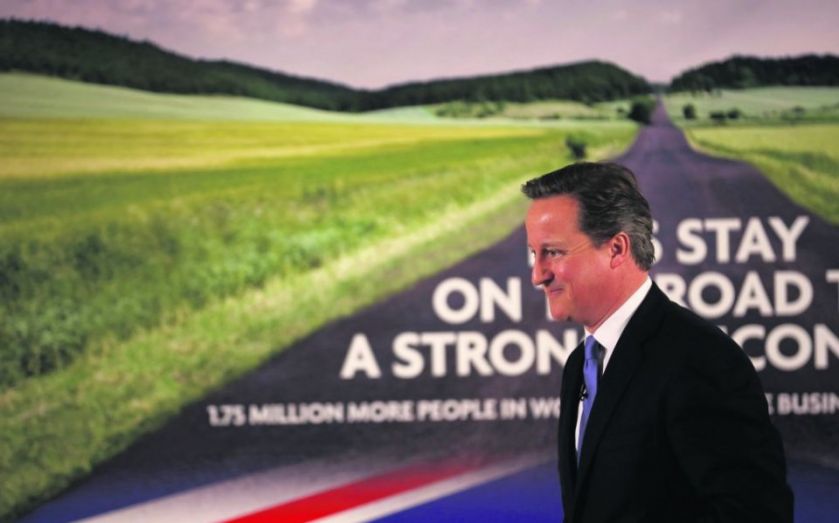General Election 2015 advertising: The campaign posters that flatter to deceive

The parties’ main campaigns kick off today, but electoral advertising is already in full swing.
In the first skirmishes of the upcoming general election campaign, two old-fashioned outdoor posters have been causing controversy.
Both the Labour Party and the Conservatives unveiled posters over the weekend that have been subject to much nitpicking from rivals.
Indeed, the Tory poster has attracted particular ridicule for apparently depicting a doctored photo of a road in Weimar, Germany, especially damning since the republic of the same name was famous for hyperinflation.
Labour yesterday released its first party adverts for the 2015 General Election: two attack posters warning that the NHS will not withstand another five years of Cameron, and that the Tories will cut public spending back to 1930s-levels. They followed on from the launch of the Conservatives’ own debut 2015 election advert on Friday – a poster featuring the said road running through lush countryside to a wooded horizon embossed with the slogan “Let’s stay on the road to a stronger economy” along with the controversial assertion that the coalition has halved the deficit.
Jon Forsyth, founding partner at advertising agency Adam & Eve, said: “The ads are off to a bad start. They’re not very well-branded, with unclear, broad messages. I’m not sure that people understand what the parties are setting out from the two ads – it’s all quite bitty. The fact that people are dissecting the Tory ad to the detailed point of where the road is from tells me something has gone wrong.”
The Tories’ advertising message for the election will be simple: who would you trust with the economy? Labour’s approach, however, will be built around a spine of five issues: the deficit, curbing immigration, the future of the NHS, living standards and the future for young people.
But Labour will start at a disadvantage. Election boss Douglas Alexander recently revealed that the party expects the Tories to outspend it by a factor of three to one in the election. In 2010’s campaign, the Tories accounted for a whopping 53 per cent (£16.6m) of combined party spending, followed by Labour on 25 per cent (£8m) and the Lib Dems on 15 per cent (£4.8m). And Alexander’s claims looks all the more credible considering the Tories are thought to have raised £78m over the past four years.
But one new – and possibly crucial – theme for the 2015 election will be digital billboard advertising. Jon Lewis, chief exec of Outdoor Plus, said: “[Digital billboards] will give political parties a chance to react to news in real time across the country’s billboards – if any party makes a mistake, there’s no reason it can’t be all over the billboards of the UK straight away. It just depends how imaginative they can be.”
CAMPAIGN POSTER FACTS UNDER THE MICROSCOPE
■ The Conservative party’s poster claims that the budget deficit has been halved since 2010 – but this is only true as a proportion of the country’s output.
■ The budget deficit in money terms has fallen by just over one third since the coalition government took office in 2010. It was £153bn in the financial year 2009-10 according to figures from the Office for National Statistics. The Office for Budget Responsibility (OBR) projects it to be £91.3bn this financial year.
■ Admittedly, the budget deficit has halved as a proportion of GDP – because the economy has grown. In the 2009-10 financial year it was 10.2 per cent of GDP. The OBR forecast it will be five per cent over the 2014-15 financial year.
■ Labour’s poster claims the Conservative party wants to cut spending on public services to levels in the 1930s, when there was no NHS. Is this correct? Not entirely. Total government spending in the 1930s hovered around 25 per cent of GDP according to research from the Institute for Fiscal Studies. In 1938 it rose to 31 per cent. However, at least 25 per cent of spending in the 1930s was on interest payments on debt from the First World War.
■ The OBR estimates that total state spending – excluding public sector banks and public companies – would fall to 35 per cent of GDP by 2019-20 under the government’s current plans.
■ The OBR does suggest under one possible scenario that spending on specific public services will fall from 21 per cent of GDP in 2010 to 12 per cent of GDP by 2020, but again, this is more due to GDP rising than spending being cut. The scenario involves a 10 per cent cut in money terms over the decade.